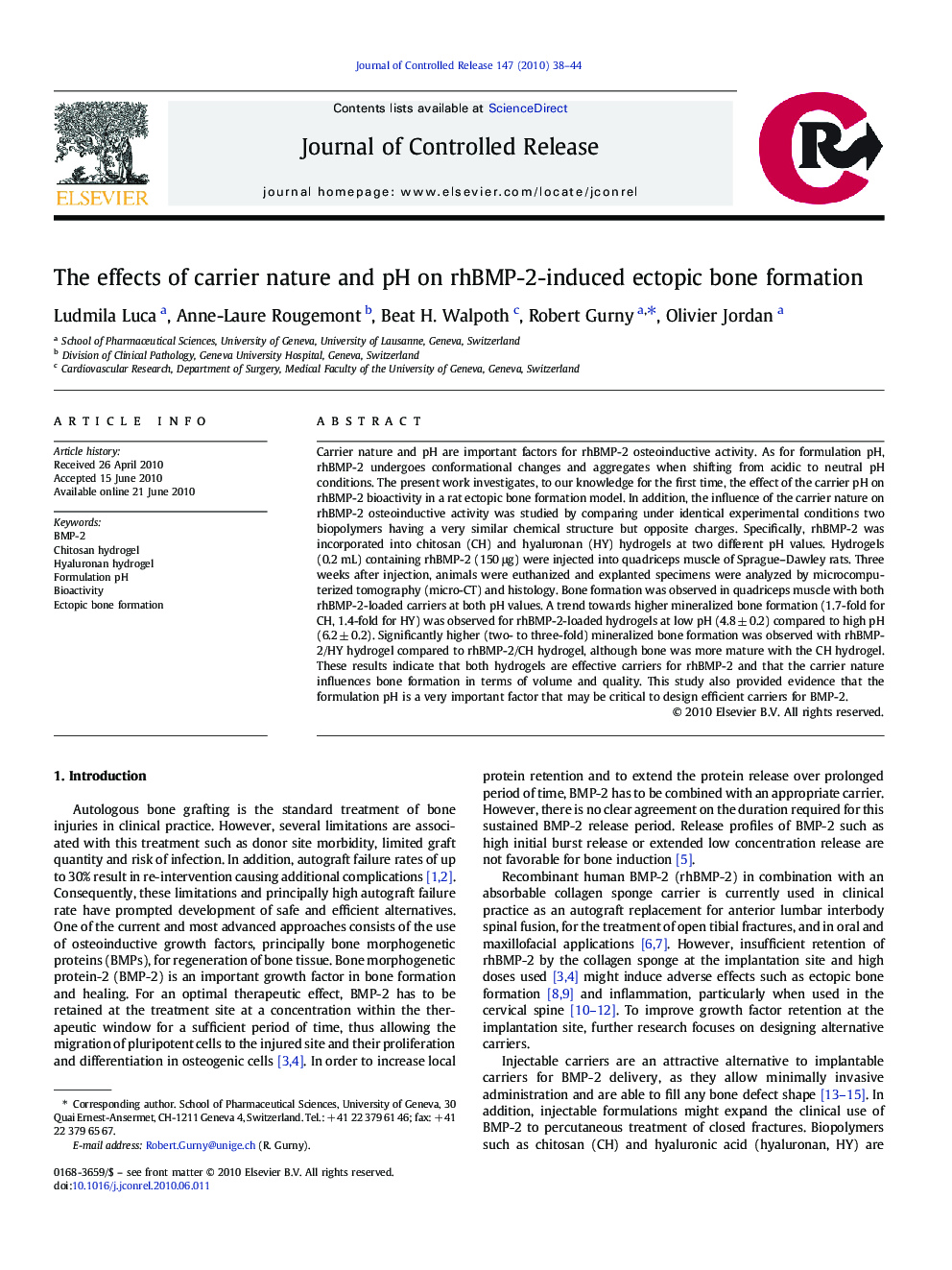| Article ID | Journal | Published Year | Pages | File Type |
|---|---|---|---|---|
| 1425468 | Journal of Controlled Release | 2010 | 7 Pages |
Carrier nature and pH are important factors for rhBMP-2 osteoinductive activity. As for formulation pH, rhBMP-2 undergoes conformational changes and aggregates when shifting from acidic to neutral pH conditions. The present work investigates, to our knowledge for the first time, the effect of the carrier pH on rhBMP-2 bioactivity in a rat ectopic bone formation model. In addition, the influence of the carrier nature on rhBMP-2 osteoinductive activity was studied by comparing under identical experimental conditions two biopolymers having a very similar chemical structure but opposite charges. Specifically, rhBMP-2 was incorporated into chitosan (CH) and hyaluronan (HY) hydrogels at two different pH values. Hydrogels (0.2 mL) containing rhBMP-2 (150 μg) were injected into quadriceps muscle of Sprague–Dawley rats. Three weeks after injection, animals were euthanized and explanted specimens were analyzed by microcomputerized tomography (micro-CT) and histology. Bone formation was observed in quadriceps muscle with both rhBMP-2-loaded carriers at both pH values. A trend towards higher mineralized bone formation (1.7-fold for CH, 1.4-fold for HY) was observed for rhBMP-2-loaded hydrogels at low pH (4.8 ± 0.2) compared to high pH (6.2 ± 0.2). Significantly higher (two- to three-fold) mineralized bone formation was observed with rhBMP-2/HY hydrogel compared to rhBMP-2/CH hydrogel, although bone was more mature with the CH hydrogel. These results indicate that both hydrogels are effective carriers for rhBMP-2 and that the carrier nature influences bone formation in terms of volume and quality. This study also provided evidence that the formulation pH is a very important factor that may be critical to design efficient carriers for BMP-2.
Graphical abstractGrowth factor loaded hyaluronan (HY) hydrogel induced more, although less mature bone than chitosan (CH) hydrogel at three weeks in rats. Low (L) hydrogel pH favors bone formation compared to high (H) pH.Figure optionsDownload full-size imageDownload as PowerPoint slide
